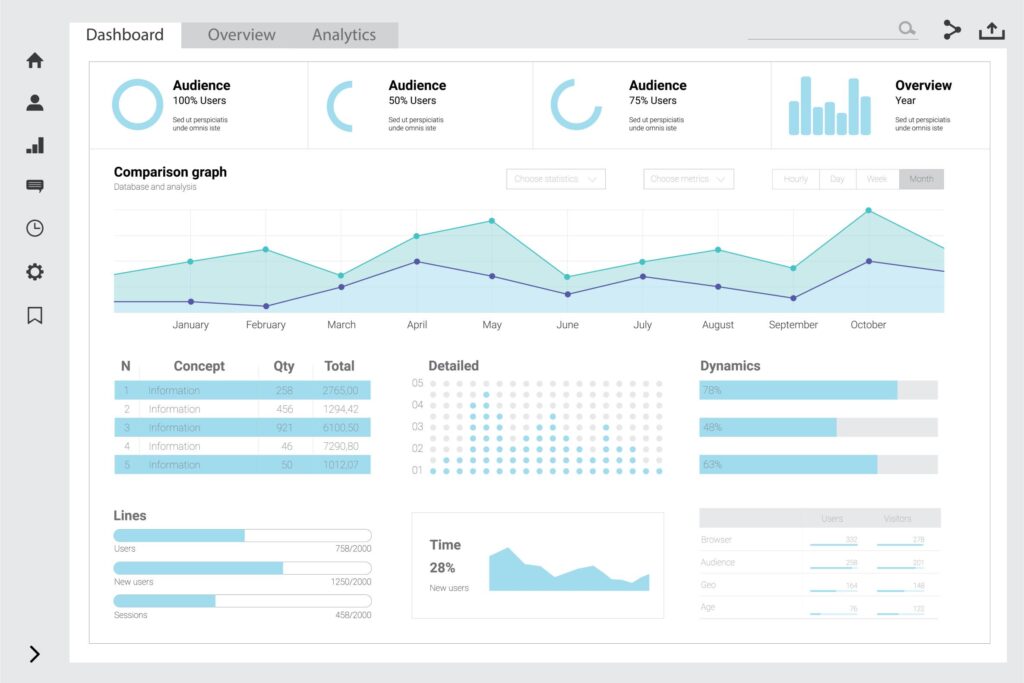Let’s clear something up: keywords aren’t going anywhere.
Sure, Google’s smarter than ever. It can understand context, intent, even user behavior. But if you want to show up when your audience searches? You still need a keyword strategy that works—one that’s thoughtful, targeted, and totally aligned with your content goals.
And no, this doesn’t mean stuffing random keywords into every H2 and hoping for the best. We’re talking about building a smart keyword strategy that actually drives organic traffic and connects with people ready to click.
Here’s how to do it right.
Step 1: Know Who You’re Talking To
Before you even open a keyword tool, get clear on this: Who is your audience, and what are they searching for?
Your keyword strategy won’t work if it’s built around what you think people should be searching. It has to reflect what your actual audience is searching—and why.
Ask yourself:
- What problems are they trying to solve?
- What words or phrases do they use?
- Where are they in the buyer journey (just browsing vs. ready to buy)?
- What kind of content are they looking for—how-tos, comparisons, definitions?
This is what separates real traffic-driving keyword strategies from random lists of keywords with high search volume and zero intent.
Step 2: Use SEO Tools to Find Keyword Opportunities
Now it’s time to dig in. There are tons of tools out there—free and paid—that can help you uncover SEO keyword opportunities. A few we like:
- Google Search Console (start with what’s already ranking)
- Ubersuggest (great for beginners)
- Ahrefs or SEMRush (deep dive into data)
- Answer the Public (find long-tail, question-based searches)
- Keywords Everywhere (browser extension for quick wins)
When researching keywords, look at:
- Search volume (how many people are searching each month)
- Keyword difficulty (how hard it is to rank)
- Intent (informational vs. commercial vs. transactional)
- SERP landscape (what kind of content is already ranking?)
Focus on low-competition, high-intent keywords—especially if your site is still building authority.
Step 3: Organize Your Keywords with a Keyword Map
Once you’ve got a solid list, don’t just toss it in a spreadsheet and hope for the best. You need to organize those keywords strategically.
Enter: keyword mapping.
A keyword map assigns specific keywords (and their variants) to specific pages of your site—so you’re not competing with yourself or diluting your SEO.

How to do it:
- Group related keywords together by topic
- Assign a primary keyword to each core page or blog post
- List secondary or supporting keywords to use in headers and body copy
- Avoid assigning the same keyword to multiple pages (unless they’re truly different in intent)
This structure will help you avoid duplicate content, create targeted pages, and make sure your content is aligned with what users (and Google) want.
Step 4: Create Content Around Keyword Intent
Here’s where a lot of keyword strategies fall apart: You need to create the right kind of content for each keyword.
Let’s say you find the keyword “best CRM tools for small business.” That’s clearly a comparison post, not a service page. On the flip side, “CRM software pricing” could be perfect for a product or pricing page.
Match your content format to the search intent:
- Informational = blog post, guide, how-to
- Navigational = landing page or product page
- Transactional = sales page, demo request, free trial
Trying to rank a service page for a research-based keyword? That’s a quick way to lose traction (and frustrate users).
Step 5: Optimize the Right Way
No one wants to read a paragraph stuffed with the same keyword five times in a row. Thankfully, Google doesn’t want that either.
Instead, focus on natural, strategic placement:
- Use the primary keyword in the page title, meta description, H1, and first paragraph
- Use variations and related keywords in H2s and body text
- Optimize for semantic search (i.e. use common questions, definitions, synonyms)
- Add internal links to and from related content
- Use alt text, filenames, and URLs smartly
Good content + good structure = rankings that actually stick.
Step 6: Keep It Fresh (Yes, Keywords Need Maintenance Too)
A keyword strategy isn’t a one-and-done thing. You should regularly revisit your strategy to:
- Add new keyword opportunities
- Remove underperforming or irrelevant ones
- Optimize old content for better alignment
- Track what’s working (and double down)
Use Google Search Console to see what you’re ranking for, what’s gaining traction, and what might need a refresh.
Step 7: Track Performance and Adjust
No strategy is complete without tracking.
Key things to monitor:
- Organic traffic over time
- Keyword rankings (especially for key pages)
- Click-through rates (CTR) from search
- Conversions or leads driven from organic traffic

If your goal is to drive traffic, make sure you’re tracking the actual impact—not just how many times you used the word “strategy.”
Keyword Strategy Isn’t About Volume—It’s About Value
The smartest keyword strategies aren’t built on spreadsheets full of high-volume terms. They’re built on understanding your audience, matching content to intent, and staying consistent over time.
So stop guessing. Start planning. And watch your organic traffic grow in a way that actually makes sense.
Need help building a keyword strategy that’s aligned with your business goals?
At Nerd Rush, we help brands get found by the right people with SEO content that actually performs. Let’s build something smart together.



